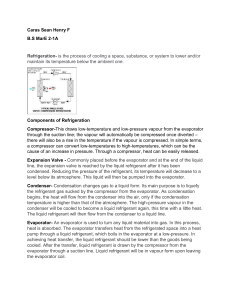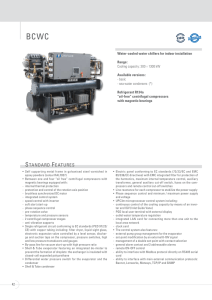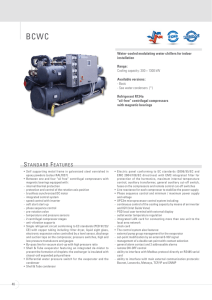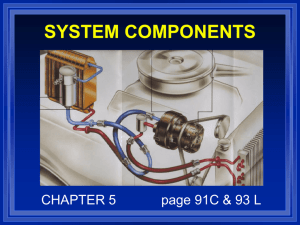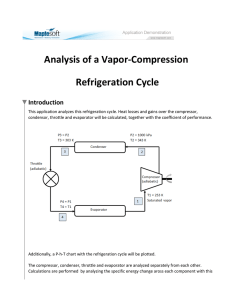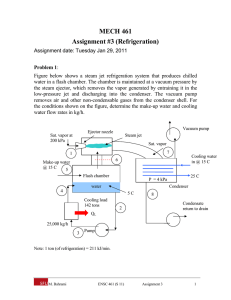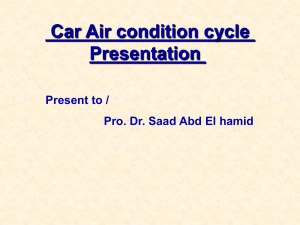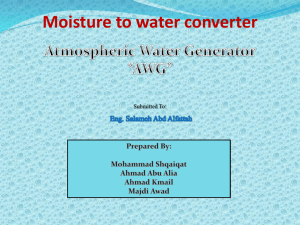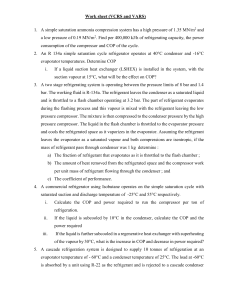HVAC System
advertisement
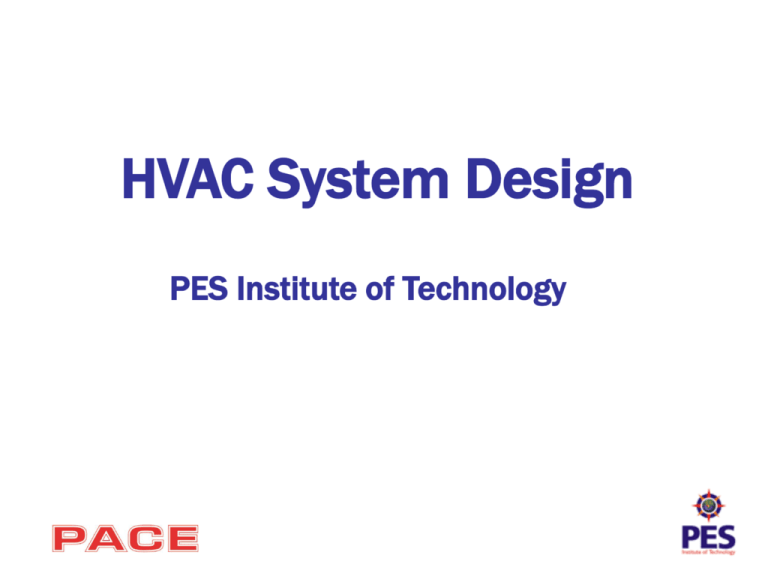
HVAC System Design PES Institute of Technology Objective • Goal: To develop an automotive air-conditioning system that is smaller and lighter than with conventional technology. • The Challenge: The system must be capable of keeping a temperature of 22˚C inside a stationary black vehicle with four occupants, with an outside temperature of 40˚C. Also, the system must be an efficient heating system, keeping an internal temperature of 15˚C with an outside temperature of 0˚C. H.V.A.C • H.V.A.C – Heating, Ventilation and Air Conditioning system • The HVAC regulates: – Room Temperature – Humidity – Air Quality – Air Flow Refrigeration Cycle 3 2 4 1 Enthalpy kJ/kg Vapour Compression Cycle Design Parameters & Considerations • • • • • Heat Load on the HVAC Cabin Relative Humidity Evaporator Temperature Refrigerant Used Refrigeration Cycle : • • • • • • • Cabin design – cooling and heating requirements Temperature and Humidity range Placement of Vents and Ducts Space considerations Effect on car performance Efficiency Environmental Impact = 5.287 kW = 40% = 4°C = R134a Vapour Compression Cycle Analysis & Heat Load Assumptions: • Compression process is isentropic. • No pressure losses in piping. • Condenser temperature = 46°C. • Evaporator Temperature = 4° C. • Refrigerant is not sub cooled. Heat Load Calculations: • Heat due to opaque surfaces • Heat due to fenestration • Internal Loads ( human ) Total Load = 3598.2 W = 1229.66 W = 460 W = 5.287 kW Results • • • • • • Evaporator Pressure = 3.38 bar Condenser Pressure = 11.9 bar Heat Load = 5.287 KW Condenser Cooling Load= 6.308 KW Compressor Work = 1.02 KW Mass Flow Rate = 1.94 l/min Selection Basis • Scroll Compressors – Compact design and High Volumetric Efficiency ( around 98% ). • Refrigerant R134a – Minimized environmental impact. • Plate-Fin Heat ExchangerCompact size, Higher heat transfer capability. • Simple design incorporated to minimize cost. Compressor •Heart of the system, belt driven pump that fastened to engine. •Responsible for compressing and transferring refrigerant. •Two interleaved scrolls with involute geometry. •One scroll fixed while the other orbits eccentrically to compress fluid Advantage: •Very high volumetric efficiency (almost 98%) •Lesser Noise and lighter compared to rotary compressor. Weight 5.8 kg Displacement 90 ml/ revolution Maximum Speed 12000 rpm Rated Voltage 12 V Condenser •Responsible for heat dissipation •The condenser is designed to radiate heat. •Located in front of the radiator •Require good air flow when system is in operation •Plate fin type heat exchanger with micro channels used. •Very compact and better heat transfer capability. •Hot compressed refrigerant vapour cools at constant pressure to liquid. Overall Heat Transfer Coefficient = 92 W/m2K Area = 6.87 m2 Accumulator •Depending on the vehicle, the A/C system will either have a receiver dryer or an accumulator. •Components contain a desiccant, chemical that attracts moisture. •Prevents formation of corrosive acids on mixture of water and acid. •Also act as temporary storage for refrigerant to prevent starving of evaporator Evaporator •Heat absorption component. •Used remove heat from the inside of vehicle. •Secondary benefit - dehumidification. •Unconditioned air passes through a filter before entering the evaporator. •Plate-fin evaporator with micro channels used. Overall heat transfer coefficient = 98 W/m2K Area calculated = 3.04 m2 Fan Flow Rate = 90 l/s Layout of Components Looking Ahead • Finalize and validate results based on inputs from other teams. • Improvise on the current design and form a cost effective solution. • Documentation and reports. Thank You !
